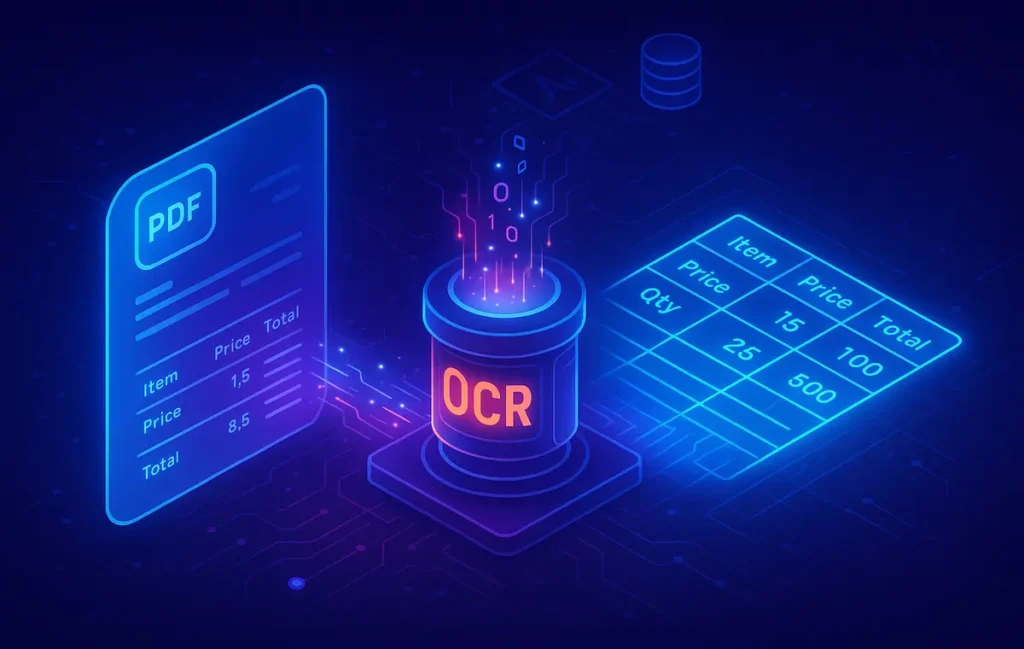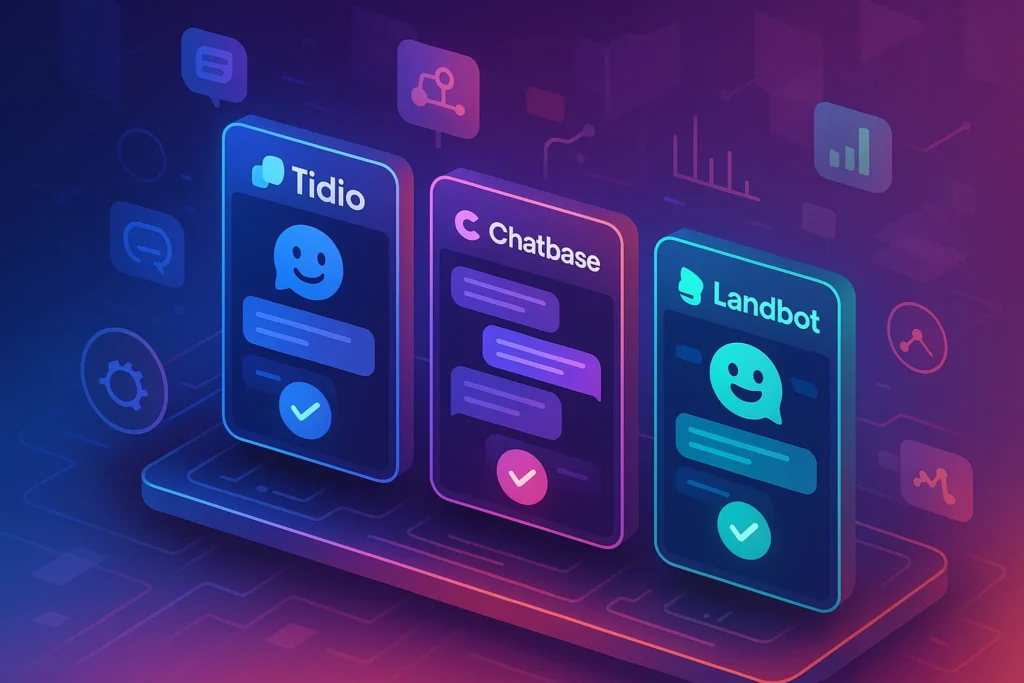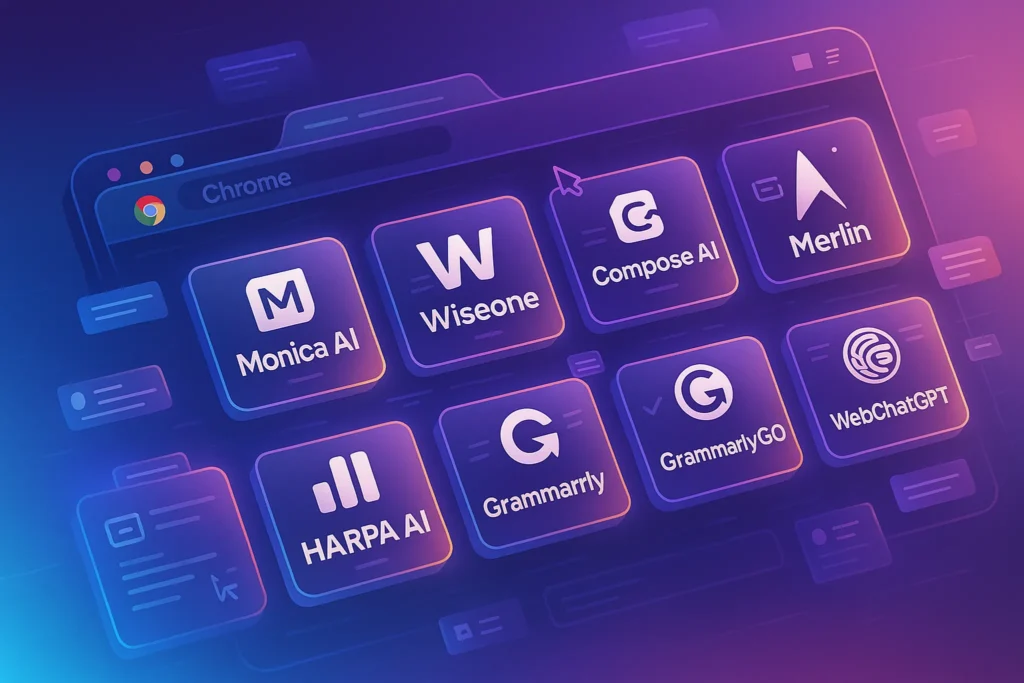📄 Intro
Small and mid-sized businesses are drowning in PDFs. Invoices, contracts, receipts, medical reports, bank statements—essential information is locked inside documents that were never meant for easy analysis. For years, the only way out was manual data entry or clunky OCR systems that spit out error-ridden text. The result? Wasted hours, endless corrections, and workflows stuck in the past.
But in 2025, things are different. A new generation of AI-powered PDF extractors is finally solving this problem. Instead of giving you messy text, they deliver structured outputs like CSV, JSON, or Excel-ready tables. That means data you can plug directly into spreadsheets, CRMs, or workflow automation platforms. In this guide, we’ll explore the best no-pain extractors on the market, how they work, and why every SMB should care.
💡 Nerd Tip: If your team spends more than 10 hours a week copying numbers from PDFs into spreadsheets, upgrading to structured OCR can literally give you back a full workday every week.
🧠 What & Why: From OCR to Structured Data
OCR—Optical Character Recognition—has been around for decades. But traditional OCR has a fatal flaw: it only outputs plain text. Imagine scanning an invoice and ending up with a jumble of words and numbers, with no structure or context. You can’t analyze it, you can’t automate it—you still need a human to fix it.
The new generation of PDF OCR solves this by combining AI with structure-aware extraction. Instead of just “reading,” these tools understand context. They detect tables, headers, key-value pairs, and semantic meaning. The result isn’t just text—it’s structured data ready for automation.
For SMBs, the difference is night and day. Structured outputs mean:
-
Faster workflows: Data goes straight to Google Sheets, your CRM, or accounting software.
-
Fewer errors: AI models trained on thousands of invoices and contracts catch patterns humans miss.
-
Automation-ready: Structured data connects easily with workflow automation software and AI-powered workflow tools.
When you combine structured OCR with document automation software, you’re not just extracting data—you’re redesigning the entire way your business processes documents.
🏆 Review of the Best No-Pain Extractors (2025)
AI OCR is a competitive space, and several players stand out in 2025. Let’s look at the tools that matter most for SMBs:
📌 Docparser
Docparser has become a favorite among small businesses processing invoices, receipts, and shipping documents. It allows you to build custom parsing rules—once trained, it automatically extracts line items, totals, and metadata into CSV or Google Sheets. SMB accountants especially love it for recurring invoice processing.
-
Strengths: Affordable, customizable, integrates with Zapier and Google Sheets.
-
Limitations: Requires initial setup of parsing rules, which can feel technical.
📌 Rossum.ai
Rossum is an AI-first OCR platform built for complex documents like contracts, insurance forms, and healthcare paperwork. Its “document understanding engine” doesn’t just read text—it classifies fields by meaning. For example, it can spot an “effective date” clause even if the wording changes.
-
Strengths: High accuracy on unstructured forms, SOC2/GDPR compliant.
-
Limitations: Enterprise-oriented pricing, though SMB plans now exist.
📌 Glean AI Extractor
Focused on financial workflows, Glean AI Extractor is tailored to SMB accounting teams. It captures invoice line items, payment terms, and vendor details, and pushes them directly into accounting software.
-
Strengths: Finance-focused, integrates with QuickBooks and Xero.
-
Limitations: Narrow scope—best only for financial documents.
📌 Azure Form Recognizer & Google Document AI
These cloud giants bring heavyweight processing power. Azure Form Recognizer and Google Document AI support multi-language OCR, custom model training, and batch document processing at scale. For SMBs already using Microsoft or Google ecosystems, they’re seamless.
-
Strengths: Enterprise-grade accuracy, scalable APIs.
-
Limitations: Setup can be intimidating without technical support.
📌 Nanonets
Nanonets is the no-code hero of the list. It offers pre-trained models for invoices, receipts, IDs, and more, while letting you drag-and-drop automation flows. With built-in Zapier and Make integrations, it’s perfect for SMB teams that want results without code.
-
Strengths: No-code setup, fast integrations.
-
Limitations: Cloud-only (not ideal if you need on-prem compliance).
💡 Nerd Tip: Always test with at least 5–10 of your own files before committing to a platform. Demo datasets often look perfect, but your documents may have quirks.
⚙️ Implementation Path: From Chaos to Structure
Switching from manual data entry to structured OCR doesn’t have to be disruptive. A phased rollout works best:
First, start by defining your use case. Are you processing invoices, legal contracts, or patient forms? Choosing the right tool depends heavily on document type. Next, test the tool with a handful of files. Most platforms offer free trials—use these to validate accuracy on your own documents.
Once confident, configure your schema. This means deciding how you want data exported: CSV, JSON, or Excel. For example, invoices might map into fields like vendor, total, due date, and tax. Contracts might map to start date, end date, and renewal clause.
Then, connect to automation tools. Platforms like Zapier, Make, or Google Sheets let you move structured data directly into workflows—sending invoice totals to your accounting app or contract metadata to a CRM. Finally, monitor errors. Even the best OCR can misread poor-quality scans. Review results weekly, fix parsing errors, and refine your setup until accuracy stabilizes.
For marketers, combining structured PDF extraction with data pipeline tools transforms messy input into clean, analytics-ready insights.
⚠️ Challenges & Fixes
While modern OCR is powerful, it’s not flawless. SMBs should be prepared for common hurdles:
Low-Quality Scans
Many PDFs are scanned copies with poor resolution, skewed pages, or faded ink. Pre-processing is key: tools that deskew or clean images can improve accuracy by up to 20%.
Language & Fonts
SMBs working globally often face PDFs in multiple languages. Not all OCR tools handle this well. Choosing platforms with multi-language support—like Google Document AI—is essential.
Privacy Concerns
Invoices, contracts, and health records often contain sensitive data. For compliance-heavy industries, cloud OCR may be a risk. The fix: on-prem options (like self-hosted OCR models) or vendors with SOC2/GDPR certification.
💡 Nerd Tip: For sensitive data, use hybrid setups—run OCR in the cloud for speed, then anonymize results before sending them to downstream workflows.
📄 Stop Copy-Pasting from PDFs
Modern OCR tools like Nanonets, Docparser, and Rossum let SMBs turn PDFs into structured data instantly. No coding, no headaches—just automation-ready outputs.
📊 ROI & Productivity Impact
One of the strongest arguments for adopting AI-powered OCR is the measurable ROI it delivers. Manual data entry doesn’t just waste time—it drains budgets and lowers morale. For an SMB processing 200 invoices a week, traditional entry can consume 30–40 staff hours monthly. With structured OCR, the same workload can be reduced to under 5 hours. That’s a 70%+ time savings that directly translates into cost reduction.
Beyond efficiency, the productivity lift is equally important. Staff who previously spent hours copying numbers from PDFs can now focus on higher-value tasks—an accountant analyzing financial trends instead of typing totals, or a marketing analyst using clean campaign data instead of hunting through receipts. Businesses that quantify these gains often find that AI OCR pays for itself within the first quarter.
⚖️ Compliance & Security
For SMBs, compliance can feel like a giant’s game. GDPR in Europe, HIPAA in healthcare, and SOC2 in finance all impose strict rules around sensitive data. AI OCR tools developed in 2025 now build compliance into the workflow itself. Instead of storing raw documents, many platforms process them on secure servers, anonymize sensitive fields, and log actions for audit trails.
Rossum, for example, offers built-in SOC2 compliance, while Google Document AI is fully GDPR aligned. For SMBs, this means you can confidently process invoices, contracts, and even medical forms without risking non-compliance. By pairing OCR with best document automation software, businesses can create automated, privacy-first pipelines that meet industry standards without heavy legal overhead.
💡 Nerd Tip: Always ask vendors about compliance certifications. SOC2, GDPR, and HIPAA compliance aren’t just badges—they’re shields protecting your SMB from costly fines.
🌍 Multi-Language & Global SMBs
Today’s SMBs aren’t limited to one geography. A small e-commerce shop might handle invoices from suppliers in China, contracts in English, and receipts in French. Traditional OCR tools often struggled with multi-language support, producing errors whenever fonts or alphabets changed.
AI-powered OCR in 2025 flips this problem. Platforms like Azure Form Recognizer and Nanonets support dozens of languages, including non-Latin scripts, and adapt to font variations automatically. For SMBs working across borders, this means fewer translation headaches and more accurate record-keeping.
It also means data pipelines stay unified. Instead of juggling separate tools for each language, teams can centralize document processing into a single automation-ready flow. This is particularly valuable for global SMBs who want to use data pipeline tools for marketers to analyze campaigns across different regions.
🔄 Integration Stories: OCR + Automation
OCR is no longer a standalone feature—it’s the gateway into end-to-end automation. The real power comes when SMBs integrate structured outputs directly into their workflows.
Picture this: an invoice arrives in PDF format. OCR extracts vendor name, date, and totals, converts them into JSON, and pushes them via Zapier into QuickBooks. At the same time, totals are logged in Google Sheets for reporting. The finance team doesn’t touch a single cell, yet all records stay synchronized.
For marketing teams, OCR can scan campaign reports, structure the data, and feed it into CRMs or dashboards. With workflow automation software, these connections happen in real time, eliminating the lag between receiving data and acting on it.
💡 Nerd Tip: Think of OCR as the “front door” of your automation stack. Once documents are structured, every downstream tool—analytics, CRM, accounting—works more effectively.
⚠️ Pitfalls & Real-World Lessons
Even with powerful tools, SMBs can stumble if they approach OCR carelessly. Some of the most common pitfalls include:
-
Not testing with real documents. Demo PDFs look clean, but real-world scans may have stains, folds, or handwriting that trip up models.
-
Ignoring processing costs. Many OCR platforms charge per page. SMBs scaling document volume quickly can see costs spike if they don’t monitor usage.
-
Assuming one-size-fits-all accuracy. Tools vary in how well they handle tables, handwriting, or multi-language input. Picking the wrong tool for the wrong document type leads to disappointment.
The lesson is simple: test before you buy, monitor usage closely, and choose tools aligned with your document mix. By avoiding these pitfalls, SMBs ensure they capture the full benefits of structured OCR without unexpected setbacks.
💡 Nerd Tip: Start with a pilot project—one document type, one workflow. Once accuracy and costs are stable, expand to more documents.
Want More Smart AI Tips Like This?
Join our free newsletter and get weekly insights on AI tools, no-code apps, and future tech—delivered straight to your inbox. No fluff. Just high-quality content for creators, founders, and future builders.
100% privacy. No noise. Just value-packed content tips from NerdChips.
🧠 Nerd Verdict
OCR used to be a nightmare for SMBs. But in 2025, AI extractors aren’t just recognizing characters—they’re creating structured, automation-ready data. This shift means teams no longer need to waste hundreds of hours typing invoice numbers or contract clauses into spreadsheets. Instead, SMBs can feed structured outputs directly into workflows, analytics pipelines, and CRMs. The impact is massive: lower costs, higher accuracy, and more time for actual business growth.
For teams already exploring tools to automate data entry or best AI-powered workflow automation tools, structured OCR is the missing piece that makes automation end-to-end.
❓ FAQ: Nerds Ask, We Answer
💬 Would You Bite?
If you had to test one of these tools today, would you start with financial invoices or legal contracts?
Crafted by NerdChips for teams tired of manual data entry, and ready to embrace automation-first workflows.



